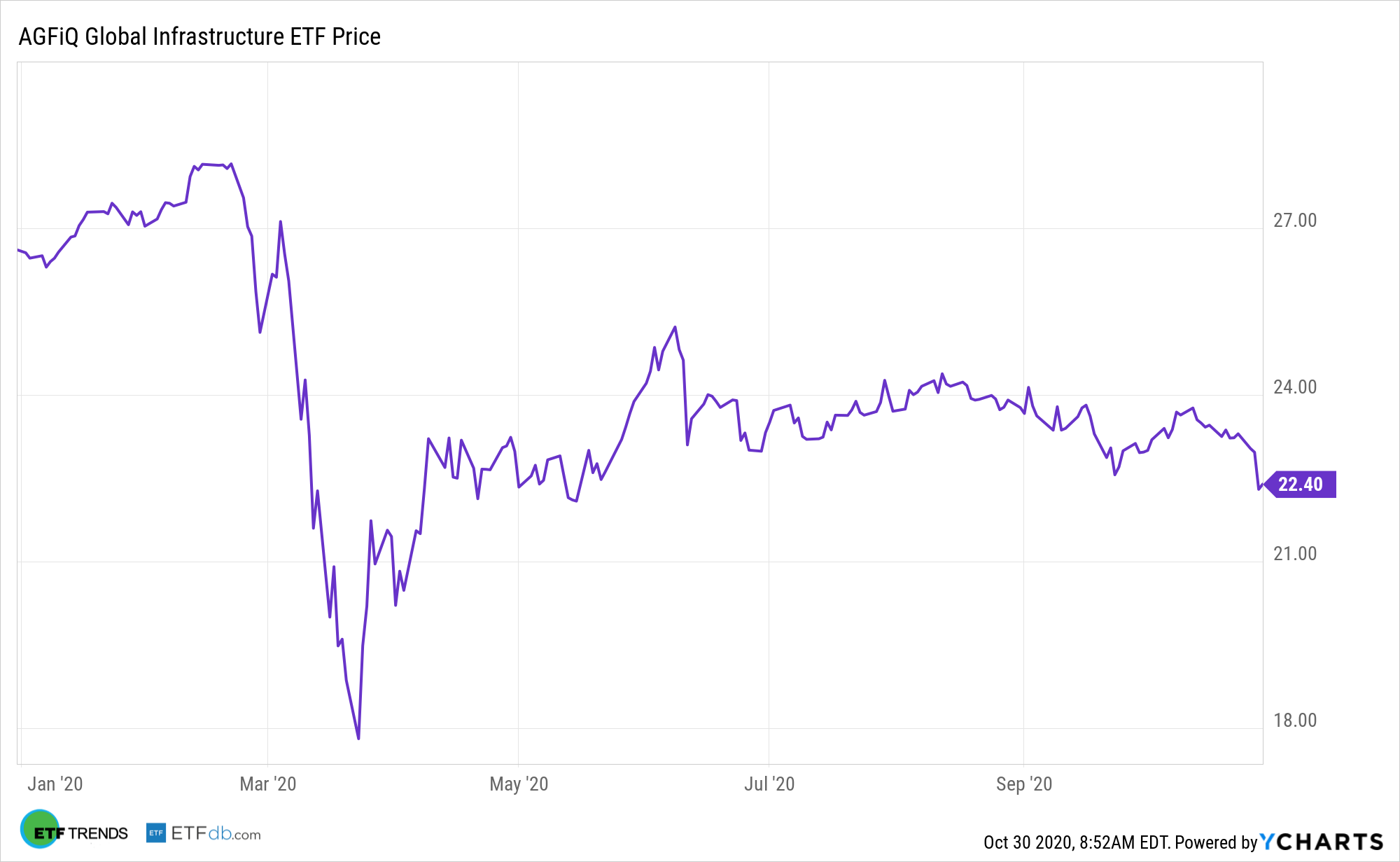The AGFiQ Global Infrastructure ETF (GLIF) and other infrastructure assets are getting plenty of attention against the 2020 electoral backdrop, but GLIF and friends will remain relevant after Election Day.
The AGFiQ Global Infrastructure ETF uses a multi-factor investment process to seek long-term capital appreciation by investing primarily in global equity securities in the infrastructure industry. President Trump is pitching a 10-year, $1 trillion infrastructure plan, which is scaled back from his 2016 campaign trail plan. Indeed, costs play a role in determining the fate of domestic infrastructure efforts.

The reason for the post-election relevancy of infrastructure is that regardless of what happens, there are still massive infrastructure needs around the world. This conundrum must be addressed as soon as possible by a wide range of governments.
The International Monetary Fund (IMF) “showed that increasing public investment by 1% of national output would create 7m jobs directly, and between 20m and 33m jobs via the knock-on effects on the rest of the economy,” reports The Guardian.
Going with GLIF: Infrastructure Beyond 2020
The infrastructure category has historically offered higher dividend yields than global fixed-income and global equities, along with greater predictability of long-term cash flows. GLIF may be able to capture the growing demands of economic development that are driving more funding into transport, power, and other systems.
“Empirical estimates based on a cross-country data set and a sample of 400,000 firms show that public investment can have a powerful impact on GDP growth and employment during periods of high uncertainty – which is a defining feature of the current crisis,” according to the IMF.
How infrastructure dollars are spent is equally as important as knowing those dollars are earmarked for infrastructure in the first place. During the 2016 presidential campaign, Trump promised to spend $1 trillion to shore up America’s sagging infrastructure, but politicians have clearly agreed to exceed that number. That promise is likely to be reiterated on the campaign trail this year.
“Even before the pandemic, global investment had been weak for over a decade, despite crumbling roads and bridges in some advanced economies and massive infrastructure needs for transportation, clean water, sanitation, and more in most emerging and developing economies. Investment is now urgently required in sectors critical to controlling the pandemic, such as healthcare, schools, safe buildings, safe transportation, and digital infrastructure,” notes the IMF.
For more alternative investing ideas, visit our Alternatives Channel.
The opinions and forecasts expressed herein are solely those of Tom Lydon, and may not actually come to pass. Information on this site should not be used or construed as an offer to sell, a solicitation of an offer to buy, or a recommendation for any product.








